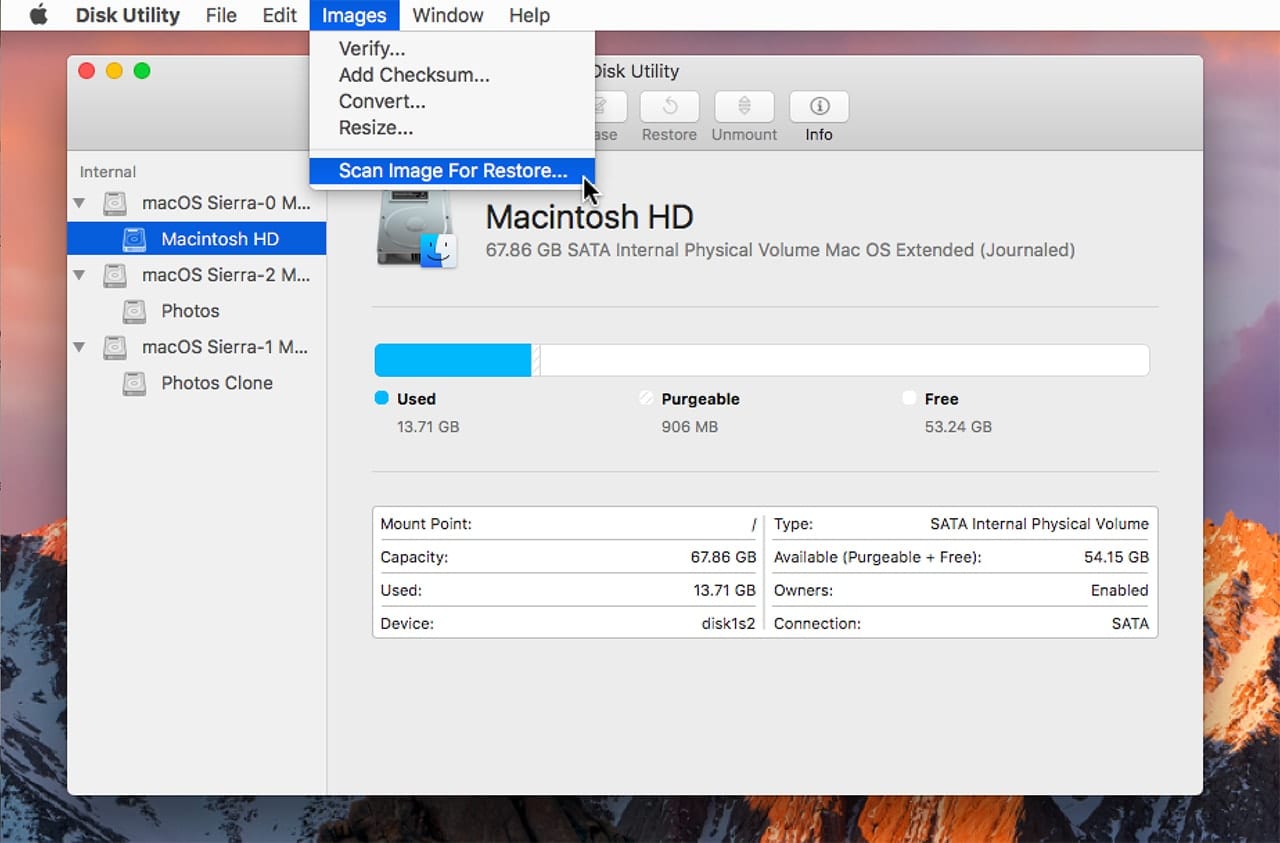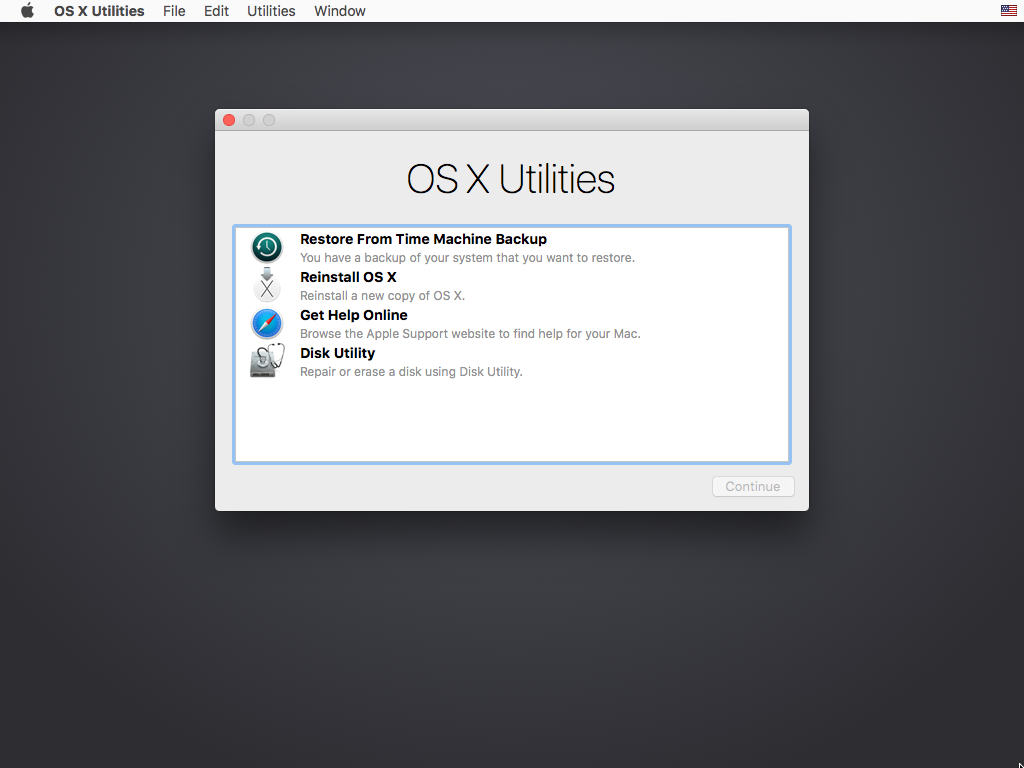

(To use the Recovery HD partition as your startup disk, hold down Command-R at startup or, if that doesn’t work, option.) But the Recovery HD probably won’t work if the internal hard drive is damaged.
#RESTORE OSX MAC#
Recovery HD: Every Mac running OS X Lion and later has a hidden Recovery HD partition that can be used to boot the computer and repair the hard disk.

But if you don’t want to create a USB drive, you may have access to two other types of emergency drives, depending on when you purchased your Mac. This device is self-contained and kept entirely separate from your computer - and any potential problems associated with it.

For situations like this, you need an emergency drive on hand to start up your computer and troubleshoot the problem.Įmergency USB Drive: Creating a bootable USB drive is your safest bet. First your computer starts freezing infrequently, then crashing more often, and then it won’t start at all. It can happen to any of us, even those who own brand-new Macs. You’ll thank yourself for taking the time to complete this project. Carry it in your pocket or put it on your keychain so it’s available if the worst-case scenario occurs. What’s a maintenance-minded Mac user to do?Ĭreate your own bootable OS X USB drive, of course! It’s easy, and if you’ve already purchased OS X and have a USB drive that’s 1 GB or larger, it’s completely free.
#RESTORE OSX DOWNLOAD#
But OS X Mountain Lion is sold in the App Store as a digital download - no physical disk is provided. With previous versions of OS X, you could have used the installation DVD to fix problems. An emergency drive (also referred to as an OS X Recovery Disk) can help you repair the hard disk, reinstall the operating system, and restore from a Time Machine backup to get your computer back fast. It’s a good idea to have a bootable emergency drive on hand, just in case disaster strikes your Mac.
#RESTORE OSX TV#


 0 kommentar(er)
0 kommentar(er)
